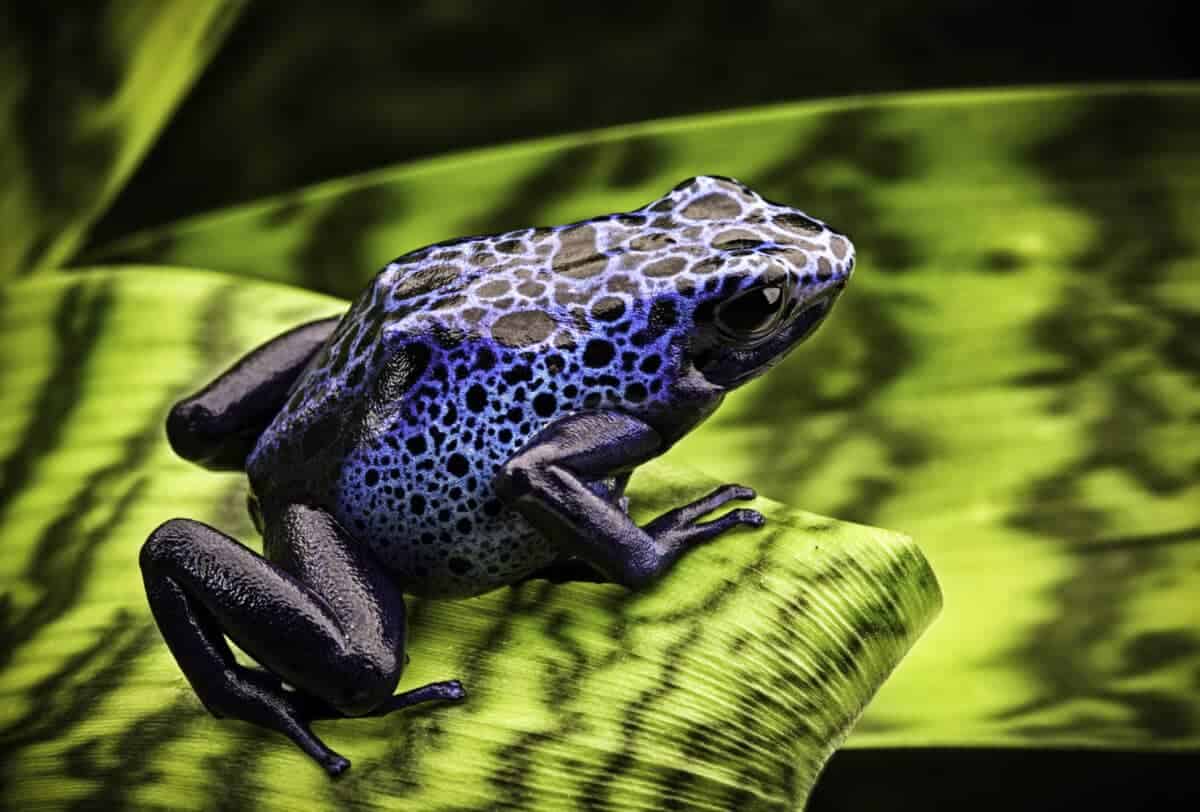Today we will carefully dissect the differences between the toad vs frog.
The Kingdom Animalia is replete with countless animals that look similar but, in reality, differ greatly from one another. Two such animals are toads and frogs. These two get confused with each other, but they have considerable differences.
They have different bodies, lifespans, and, most importantly, different eating habits.
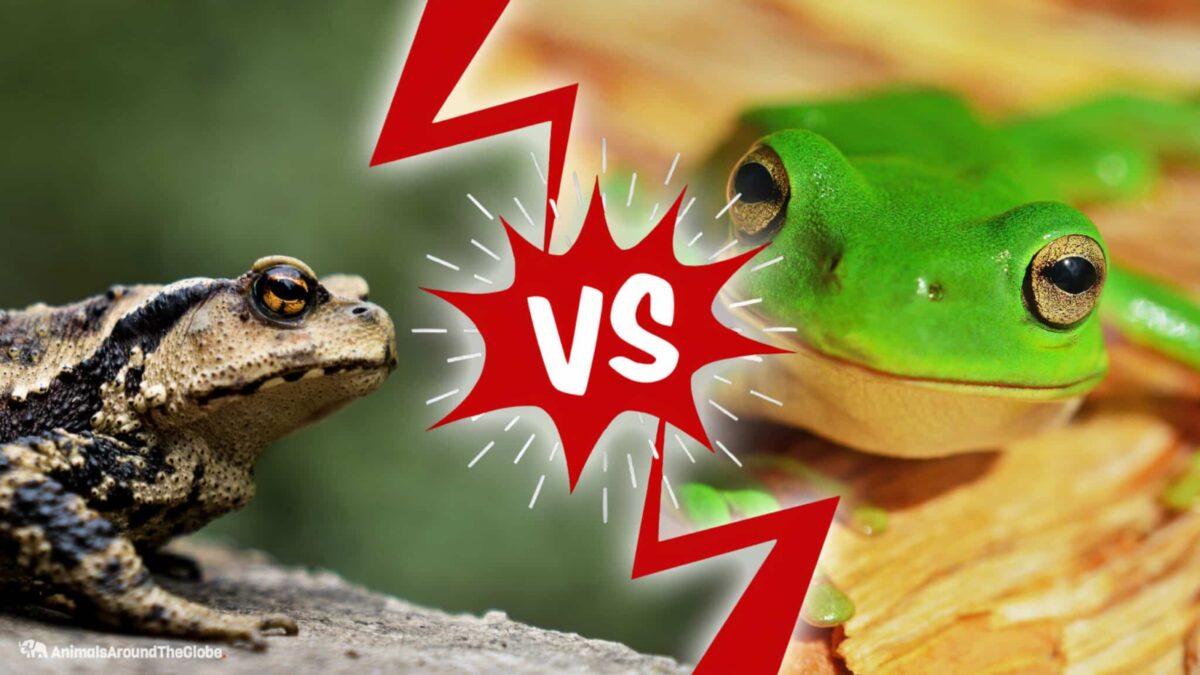
However, because toads and frogs are often found living together, many people don’t know the difference between them, so they assume both animals are the same. If you have difficulty differentiating between these animals, this article will be an interesting read for you.
This article will determine the differences and similarities between frogs and toads and what physical traits can tell us about their lifestyle. Why are frogs bigger in size than toads? What does their lifecycle entail? We’ll cover all this and so much more – so read on to become a frog- and toad-connoisseur!
Difference Between Toad vs. Frog
| Characteristics | Frogs | Toads |
| Group | Amphibians | Amphibians |
| Color | Dark green, brown, or black | Brown, red, olive, or gray |
| Size | Up to 8 inches in length | Up to 6 inches in length |
| Weight | 2-14g | 20-22g |
| Food | All kinds of insects | Insects and other arthropods |
| Lifecycle | Egg, tadpole, metamorphosis, adult, death | Egg, tadpole, adults, death |
| Lifespan | 10-12 years | 10-14 years |
| Skin | Smooth | Rough |
| Poisonous | Yes | Yes |
It is vital to note that frogs and toads are amphibians. Still, several differences between them separate them into two different families. Here is a detailed comparison of these two amphibians.
An Overview of Toads And Frogs
Before pinpointing their contrasting features, habits, or habitat of the toad vs. frog – let’s first quickly get an overview of both animals.
An Overview of Toads
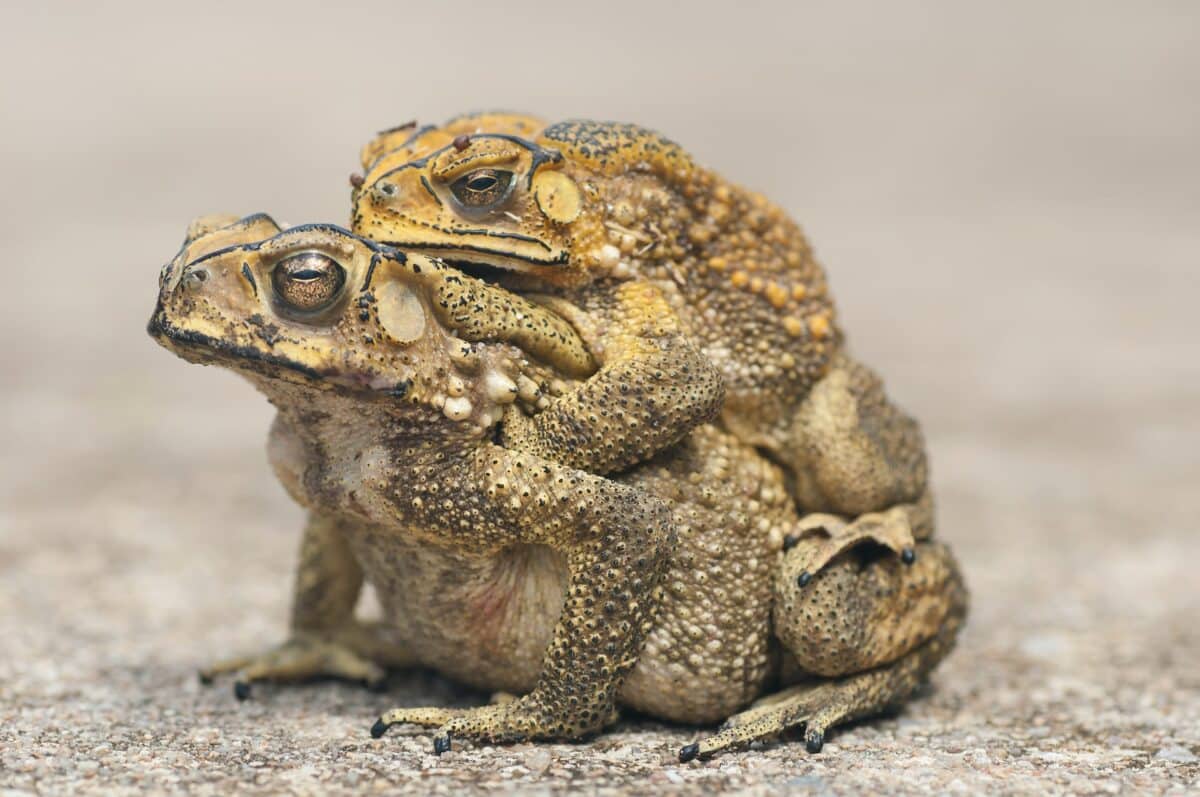
Toads are an ancient group of amphibians of the order Anura that date back over 200 million years. They were once classified along with salamanders in the group Urodela, but modern evidence suggests they should be in their own taxonomic order. Notably, there are approximately 300 species of toads known to science.
However, some species of toads prefer living in water, while others live on land only during wet seasons when there is plenty of water for breeding. In general, toads are found all over the world except in polar regions and some remote islands. They live in various habitats, including humid tropical forests and deserts, where they burrow underground to keep cool during hot weather.
Moreover, the body structure of an adult toad is basically a box. The head, forelimbs, and hindlimbs are all located on the trunk of the animal. The body is divided into two general regions: the dorsal side (back) and the ventral side (belly). The head has four features: eyes, nostrils, mouth, and ears.
Also, toads have interesting names based on their genders. The adult male is called a hob or hobbler, while the adult female is called a bun or tinker. Lastly, all toads have parotid glands that produce toxic secretions, making all toads poisonous.
An Overview of Frogs
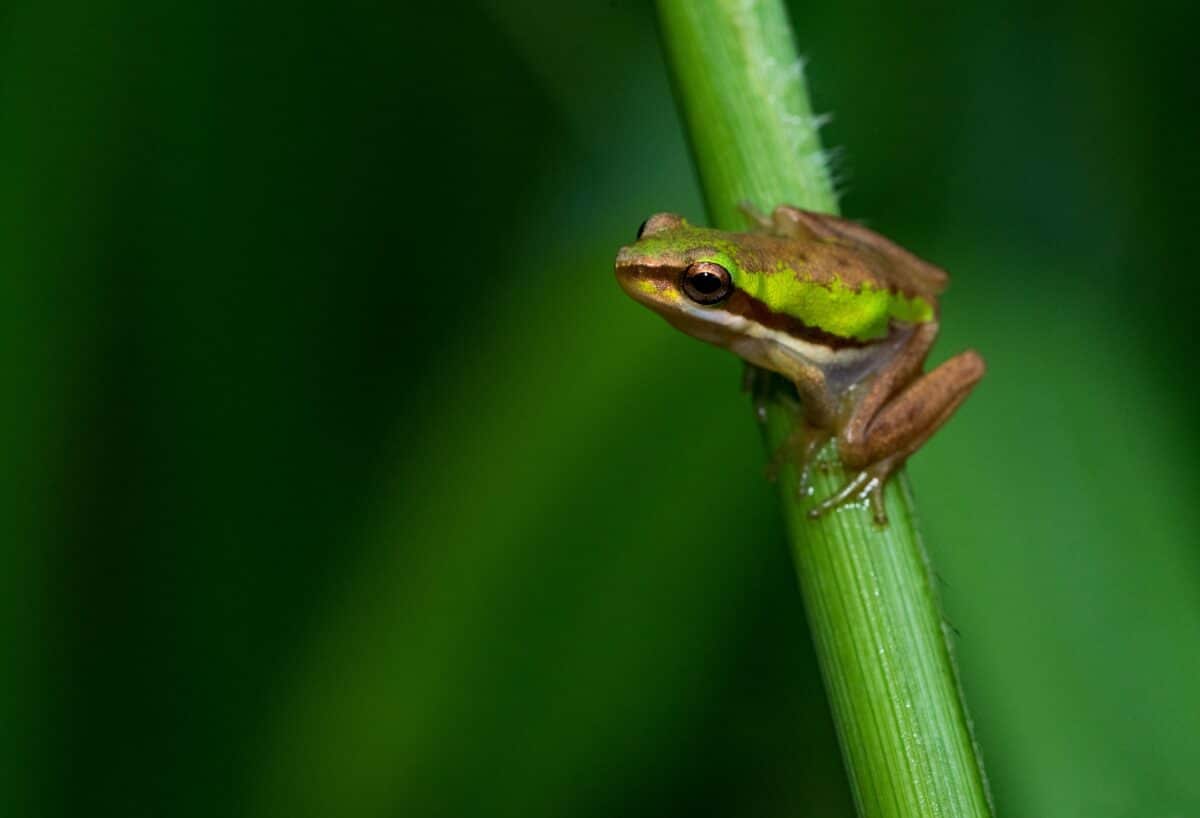
Like toads, frogs are amphibians of the order Anura, which comprises all extant members of the ancient subclass Lissamphibia.
Frogs are widely represented all around the globe and their habitat ranges from the tropics to subarctic regions. But you will find the greatest concentration of species diversity in tropical rainforests. Also, it is noteworthy that there are approximately 4200 recorded species, accounting for over 85% of extant amphibian species.
The body structure of an adult frog generally consists of a sturdy body, protruding eyes, many bones in the limbs (five digits on each foot), no tail, and smooth or slightly bumpy skin. Moreover, frogs have glands on their hands and feet that produce sticky mucus, enabling them to climb and walk on vertical surfaces.
Interestingly, frogs are known to be poisonous, but unlike toads, some frog species, such as dart frogs and horned frogs, are completely non-toxic when bred in captivity.
General Appearance
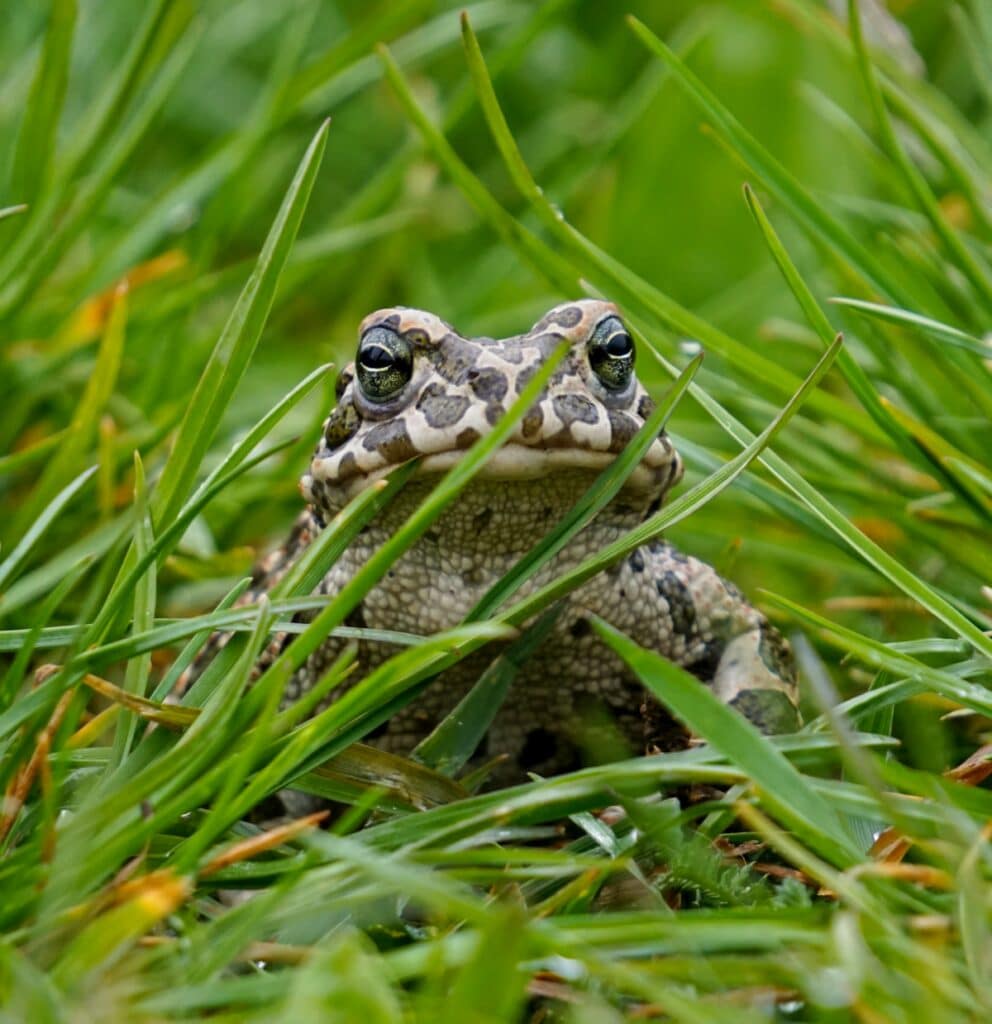
Many people often get confused and can’t differentiate between toads and frogs. It is probably due to their almost identical body structure. However, if we minutely note down their appearance, we find many contrasting features.
Some of these are discussed below.
Structure
As mentioned above, toads and frogs are amphibians of the order Anura. They are distinguished from other amphibians by means of the glandular dots and warty ridges covering their skin, no tail, and a smooth, or in some cases, nearly soft tongue. In addition, toads have dry, bumpy skin, while frogs have moist smooth skin.
Notably, toads are generally smaller than frogs, and they burrow rather than hop. Frogs can be distinguished from toads by their slimy skin and bright-colored bodies. For example, the California red-legged frog has a greenish back and legs. Likewise, the California newt is dark brown with red patches on its back.
In some species, such as cane toads in Australia, there is no obvious distinction between the body structures of frogs and toads.
Size
The size of toads and frogs varies significantly. The largest frog species is the Goliath frog (Conraua goliath), which can grow up to 10 inches long and weigh up to 4 pounds.
The smallest frog species is the Dwarf Hemisus Tree Frog (Hemisus hemimaculatus), which measures less than 0.5 inches long when born and grows no larger than 2.5 inches long during its lifetime.
On the other hand, a toad can grow to be 4-6 inches long and weigh 0,01 – 0,5 ounces. Some more prominent spices, such as Southern toads, can weigh up to 0,7 ounces.
Method of Movement
Frogs and toads have four legs with five toes on each foot, but frogs can jump, whereas toads cannot. However, toads use their long tongues to catch food, while frogs use their hands.
Toads generally move slower than other animals because they don’t hop as much as frogs, who hop as far as 10 feet at a time. Contrarily, frogs also move primarily by jumping instead of walking or swimming, as toads do. Also, it is vital to note that the speed at which each animal moves depends on its environment and what it needs for survival.
Color and Texture
Frogs are typically green or brown with orange, yellow, or red speckles on their backs and legs. Additionally, the color may change depending on the time of year or the environment in which they live. Overall, their skin is smooth but has warts that may be raised above the skin’s surface.
However, toads can be green, gray, or brownish-gray, but they usually have darker spots on their backs and legs that form rings around their bodies. The texture of their skin varies from smooth to bumpy, with warts that don’t protrude from the surface like those on a frog’s body.
Toads Vs. Frogs Diet
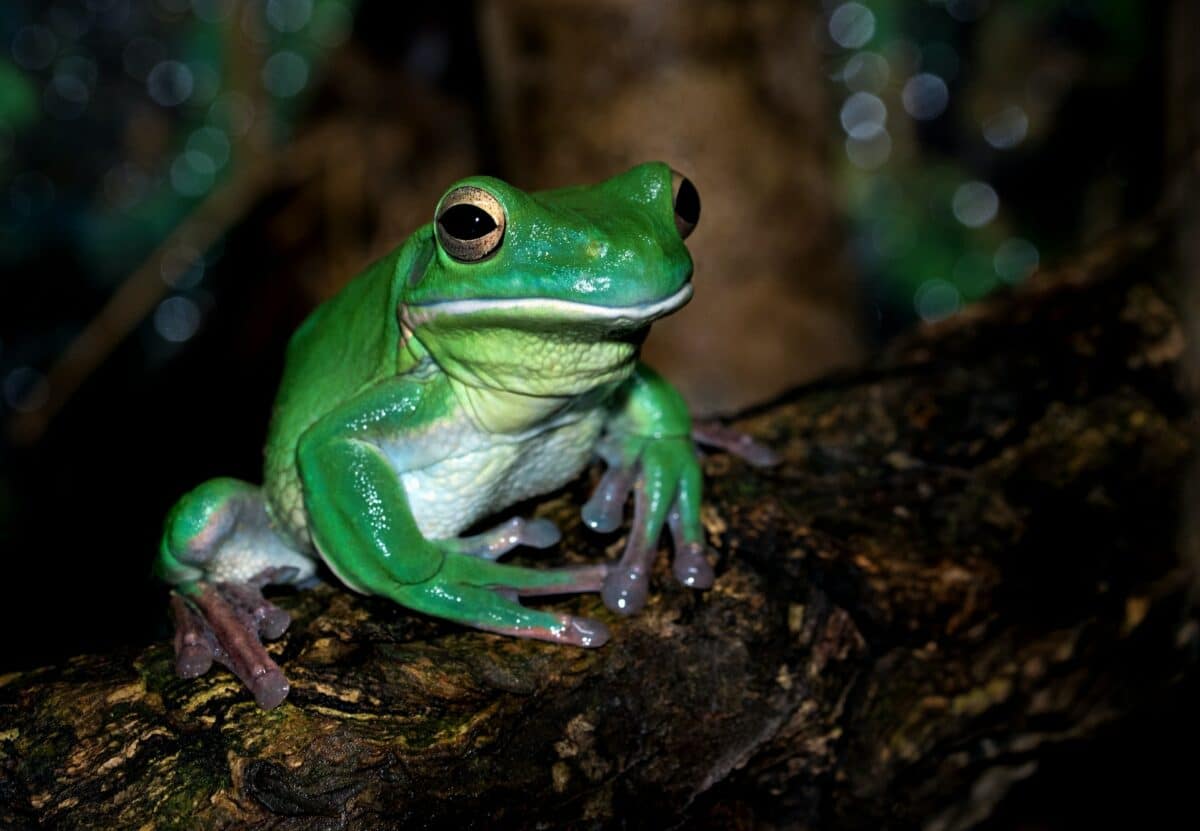
Frogs and toads will eat almost anything they can catch, but they both prefer insects.
Toads, however, have larger mouths than frogs and eat more considerable prey items like mice and small birds. Frogs have smaller mouths with fewer teeth than toads, which helps them catch their insect prey more easily.
In addition, frogs also have longer tongues than toads — around half of their body length — which helps them catch their prey!
Toads Vs. Frogs Breeding
Breeding behavior differs between toads and frogs as well. The mating season for toads varies depending on their location and the temperature at the time.
In general, the mating season of toads starts in spring and lasts until summer, when it gets too hot for them. Male toads call females by making a loud croaking noise that can be heard from far away. When a female approaches a male, he will try to impress her by inflating his throat and making himself look bigger and stronger than he is.
After mating, females lay eggs in shallow water or on land under logs or rocks covered with moss or leaves so they don’t dry out before they hatch into tadpoles. Tadpoles eat algae off rocks or plants for several weeks before transforming into baby toads.
In frogs, the male frog transfers sperm to the female frog directly into her body by releasing it through his cloaca. Once inside her body, the sperm travels through her oviducts until they reach her ovaries, fertilizing the eggs. The eggs then develop into tadpoles and are released from the female’s body by a long tube called an ovipositor.
Most frogs lay their eggs in water or on land near water (except the tree frog family Hylidae). Some species bury their eggs in aquatic soil, while others attach them directly to vegetation or rocks in streams and rivers. In some cases, female frogs protect their eggs from predators by laying them in communal nests with other females who also lay their clutches there (the Australian green tree frog being one example).
Toads Vs. Frogs Lifecycle
Let’s discuss the lifecycle of frogs and toads one by one.
Frogs’ Life Cycle
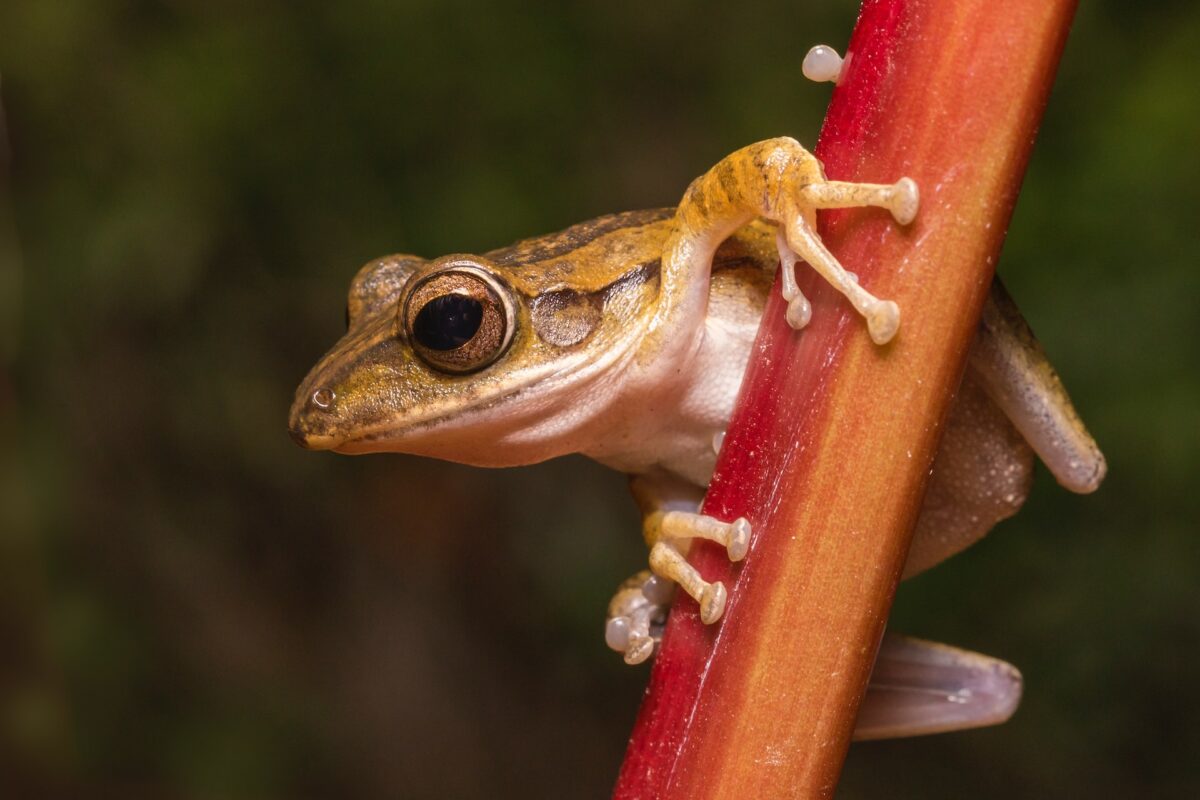
The life cycle of a frog is a sequence of changes that the animal goes through from birth to maturity and death. The stages include egg, tadpole, metamorphosis, adult, and death.
Stage 1 – The Egg: The egg stage begins when the female deposits her eggs in water. The male fertilizes the eggs as they are being laid.
Stage 2 – The Tadpole: After two days, the embryo hatches from each egg and becomes a tadpole, which looks like a fish with a tail and gills. The tadpole will stay in this stage for about four weeks before its metamorphosis.
Stage 3 – The Metamorphosis: The metamorphosis stage occurs when the tadpole’s tail shrinks and moves inside its body until only its hind legs remain on its backside (the front legs have disappeared). The forelimbs have become tiny arms with fingers, while the back legs have morphed into sturdy legs with toes.
Stage 4 – Adult: At this point, the tadpole is ready to leave the water and begin its life as an adult frog outside of water, on land, or in an aquatic habitat such as a pond or marshy area.
Stage 5 – Death: After one or two years of living on land, frogs enter their adult phase, where they live out their lives until they die of old age or become prey for other animals, such as birds or snakes.
Toads’ Life Cycle
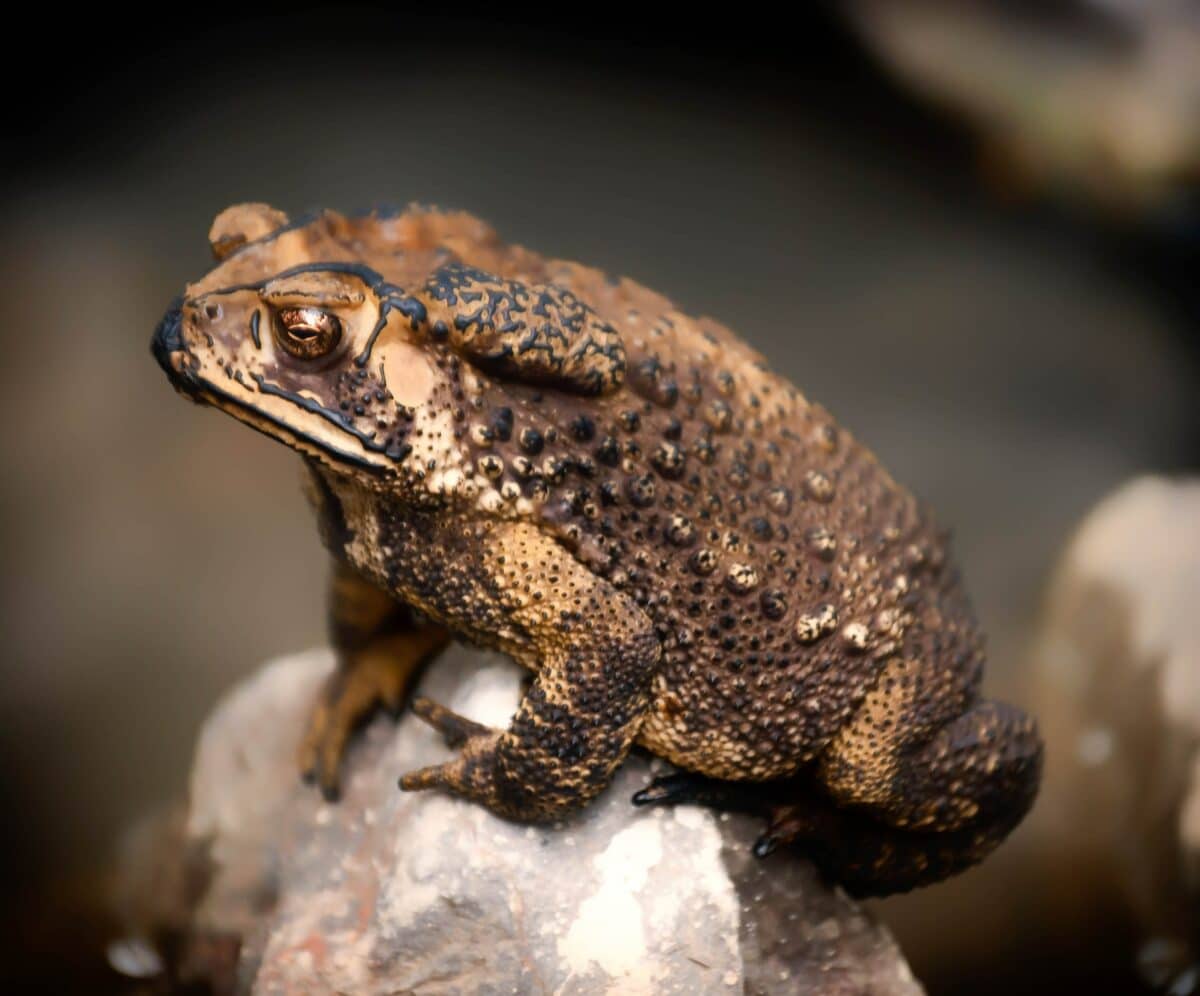
The life cycle of a toad varies depending on the species. Some toads mate in the spring, but most will breed in summer. Here’s a general overview of the toad’s life cycle.
Stage 1 – Mating Season: After mating, the female lays her eggs and then covers them with soil or other debris. She then leaves the eggs to hatch on their own. The eggs usually take about two weeks to hatch.
Stage 2 – Baby Toads: The baby toads emerge from their eggs with gills, which they use for breathing for several days. During this time, they are very vulnerable to predators such as birds and fish. Once their lungs develop, they can breathe air and leave their hiding places to search for food. Baby toads are also known for their bright colors that can serve as camouflage from predators.
Stage 3 – Adulthood: Adult toads will live an average of 10 years in captivity but only 5 or 6 years in the wild, where they face extreme weather conditions and predators such as snakes, hawks, skunks, raccoons, and coyotes.
Stage 4 – Death: Toads can live for many years, but when their time comes, they will die. When a toad dies, it goes through several stages. First, the skin becomes loose and watery around the mouth as the organs decay. Next, the eyes become cloudy and swollen.
Toads Vs. Frogs Lifespan
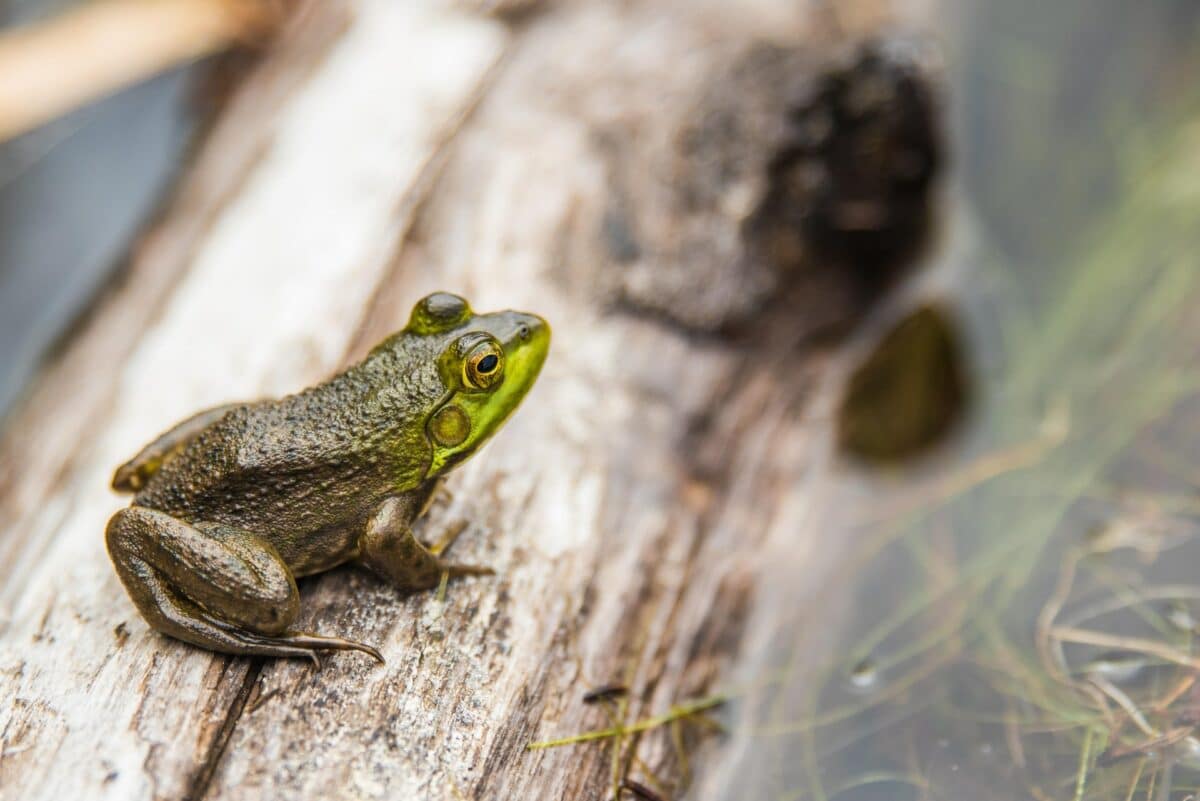
Toads are typically short-lived animals. The average lifespan of most toads is between 10 and 12 years, but some species can live up to 15 years in captivity.
The lifespan of a toad depends on its environment and its species. Toads that live in temperate regions of the world tend to have longer lifespans than those living in tropical areas. Tropical climates offer little protection from predators, so many tropical species must grow very quickly or face death at an early age.
On the other hand, a frog can live up to 10 to 14 years. The lifespan of frogs varies based on their environment, diet, and genetics.
Types of Toads and Frogs
Types of Toads
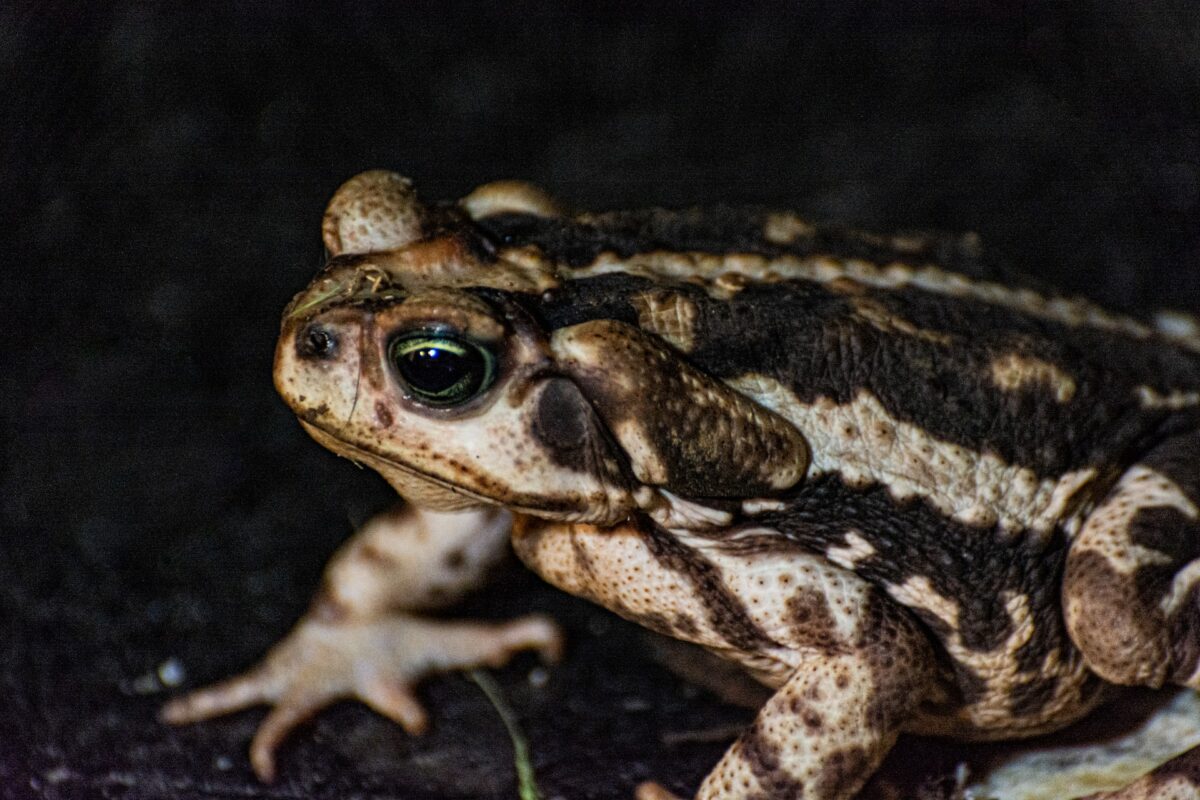
Some of the most common species of toads are mentioned below.
- American Toad (Bufo americanus) – The American toad is a giant, stocky toad with warty skin and a distinct V-shaped stripe from ear to ear. It is gray or brown on the dorsal surface and white underneath. The belly may have red spots. They can be found in various habitats, including forests, grasslands, and farmlands throughout North America.
- Common Toad (Bufo bufo) – The Common Toad is the most widespread of all toads and is native to Europe, northern Africa, and Asia. The common toad is a medium-sized toad that ranges in color from greenish brown to dark brown or black. It has large parotid glands behind each eye, and its back is covered with wart-like bumps. The common toad has a short snout and a large tympanum (eardrum). It eats a wide variety of insects and other invertebrates.
Types Of Frogs
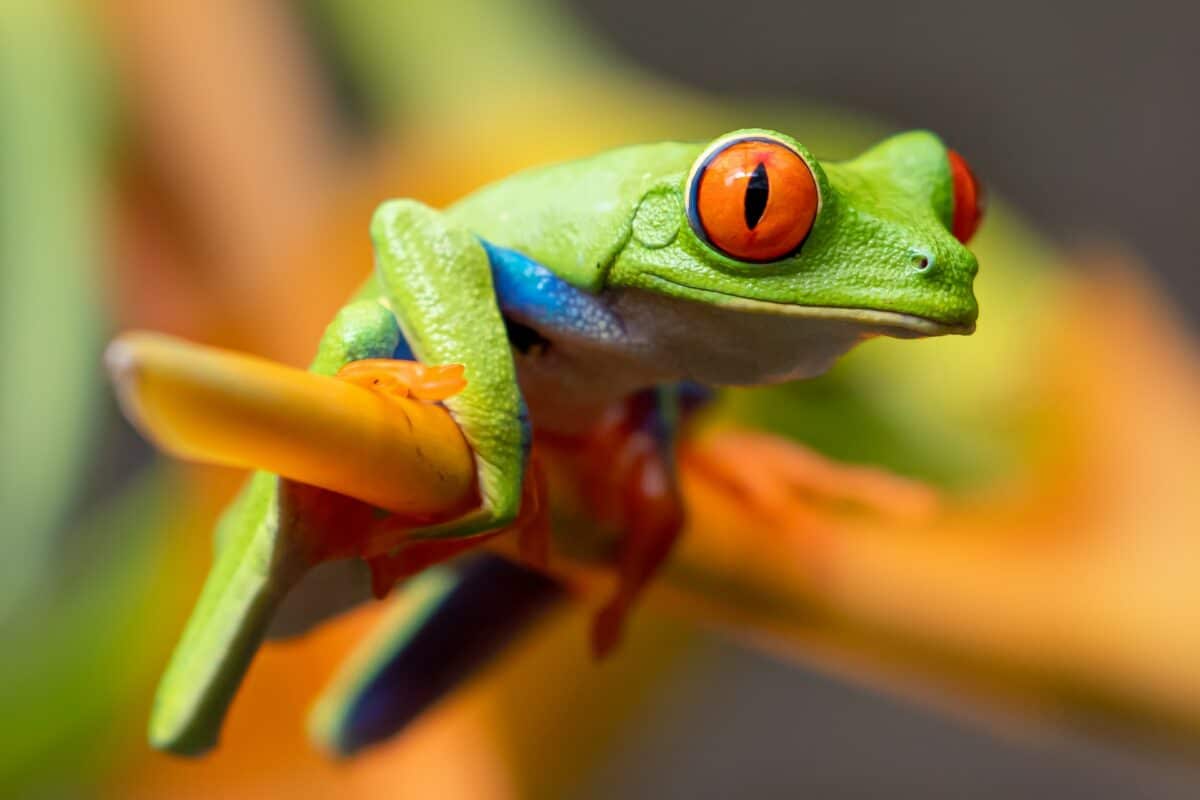
There are many different types of frogs, but only a few are commonly found in the wild.
Here are some of the most common types:
- African Clawed Frog – The African clawed frog is native to Africa, but some have been imported into the United States for use in laboratories. This giant frog has long legs and toes with sharp claws at the tips. It is tan or brown with dark markings on its back and sides. The webbing between its toes is very small compared to other species of frogs, so it walks more like an animal with legs instead of swimming as different types do.
- African Dwarf Frog – The African dwarf frog was originally from Africa but has been introduced into other areas (such as Australia) by humans for use as pets or for food (its meat is considered a delicacy). These small frogs grow no longer than 2 inches long.
The Final Word
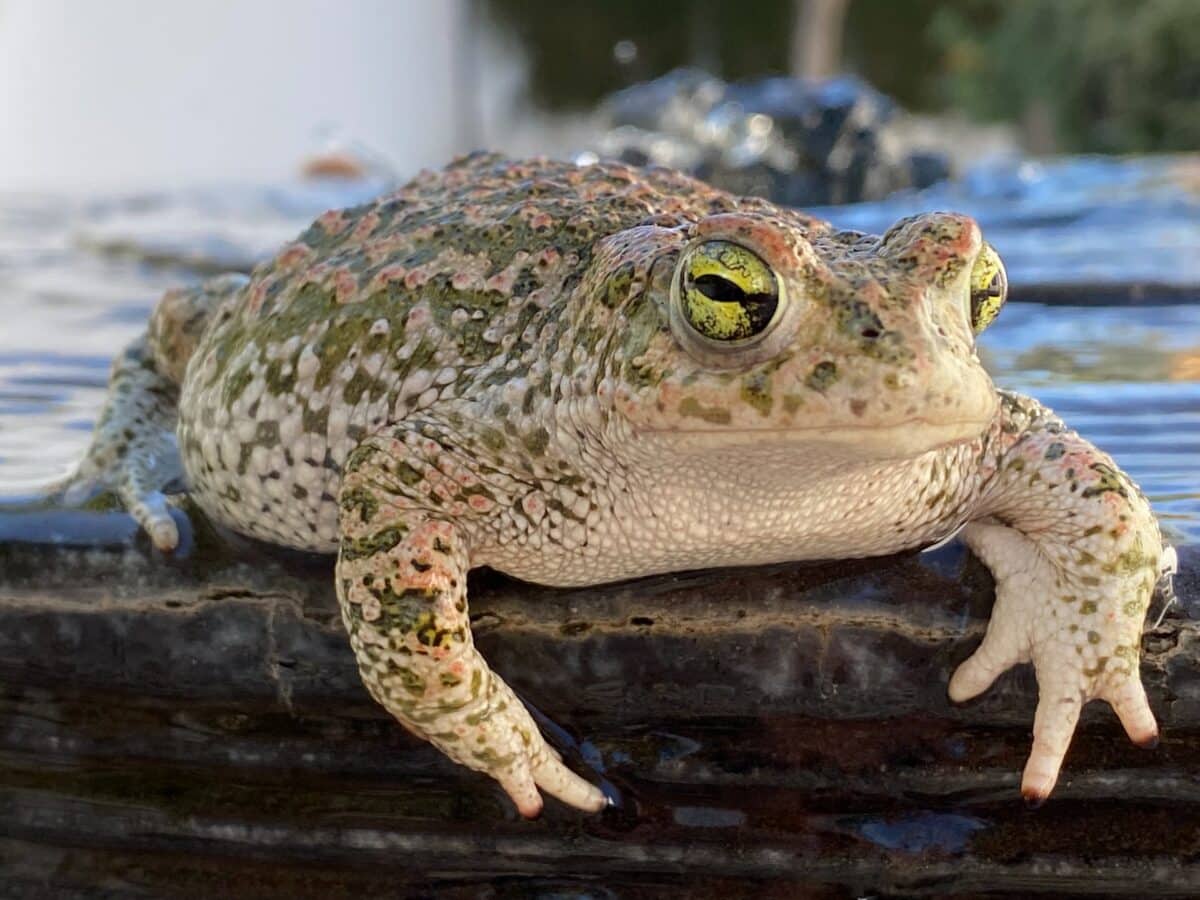
To conclude, we are confident that this article helped you understand the differences between all those toads and frogs. Penn State University researched toads and frogs and concluded that all toads are frogs, but all frogs are not toads. It is because toad is a further classification of frogs. Due to this classification, we can determine several dissimilarities between toads and frogs.
However, it is vital to note that both animals do not have any scientific dissimilarity as both are amphibians belonging to the same group of Animalia. Still, a lot makes them dissimilar – which we have already thoroughly discussed in this article.
Thank you for reading this article on the toad vs. frog! Two other species that frequently get confused is the possum and opossum – learn how to differentiate between them here!
- The Most Adorable Footage of Baby Wolves in Minnesota - April 15, 2024
- Man Teaches Bald Eagle to Play Fetch - April 15, 2024
- Mother Buffalo Tries to Save Baby From Komodo Dragons - April 14, 2024

